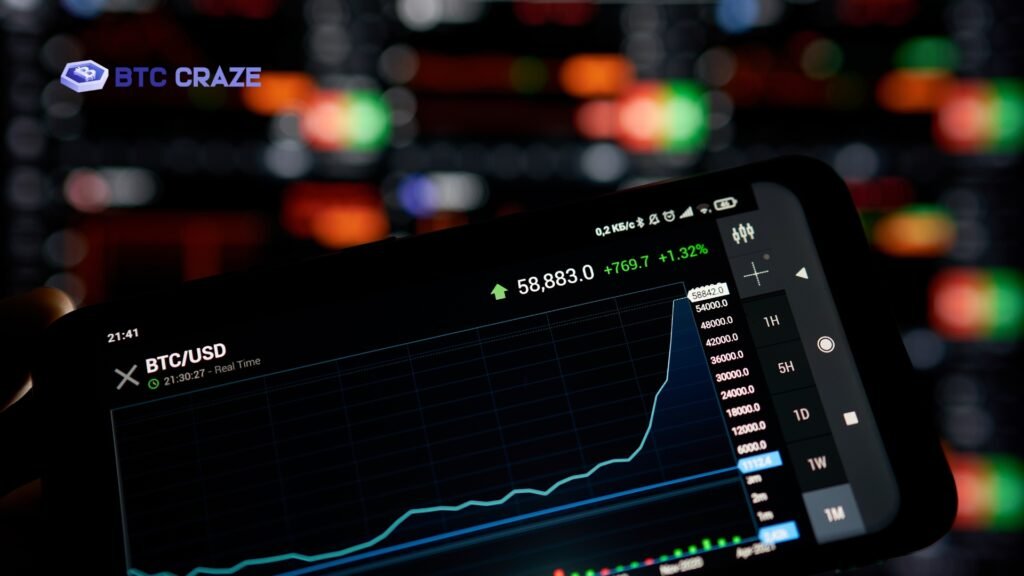Bitcoin Halving Prediction Price: The halving of Bitcoin’s value is one of the most talked-about events in the cryptocurrency community. At these events, which are scheduled to happen around every four years, miners’ block reward is cut in half, which slows down the creation of new bitcoins. The Bitcoin network relies on this process to regulate the supply of the cryptocurrency and, by extension, its price. People are starting to talk a lot about how the upcoming Bitcoin halving may affect the price of Bitcoin as it gets closer. This article looks at the past, present, and future of Bitcoin halving predictions and its effects on price.
To keep the overall amount of Bitcoins at 21 million, the code for Bitcoin includes a pre-programmed event called a halving. In the beginning, miners got 50 Bitcoins for every block they mined. With the initial halving in November 2012, this incentive was lowered to 25 BTC. It was further lowered to 12.5 BTC in the second halving in July 2016 and to 6.25 BTC in the third halving in May 2020. Around April 2024, there will be another halving that will reduce the payout to 3.125 BTC. However, With each halving, New Bitcoins are released into circulation at a reduced pace, increasing scarcity. If demand stays the same or increases, this shortage could cause prices to rise.
Historical Impact on Bitcoin’s Price
Historically, significant price increases have followed Bitcoin halving events, though the correlation isn’t always immediate or straightforward. Here’s a look at past halvings and their impact on Bitcoin’s price:

- First Halving (November 2012): Bitcoin traded around $12 before the first halving. Following the halving, the price surged to over $1,000 by late 2013. This dramatic increase was driven by increased interest and speculative buying.
- Second Halving (July 2016): Bitcoin’s price was approximately $650 before the second halving. After the halving, Bitcoin’s price climbed to around $20,000 by December 2017, driven by a significant increase in public interest and media coverage.
- Third Halving (May 2020): Bitcoin traded around $8,500 before the third halving. By the end of 2020, Bitcoin’s price had reached nearly $29,000. The rally continued into 2021, with Bitcoin hitting an all-time high of over $60,000 in April 2021.
Although technical developments, market emotion, and macroeconomic variables also play important roles, the price of Bitcoin has increased after each halving.
Factors Influencing Post-Halving Price Predictions
Several factors will influence Bitcoin’s price trajectory following the next halving:
Market Sentiment
The price of Bitcoin is highly affected by investor mood and speculation. If the market believes the halving will cause prices to rise, a pre-halving price increase is possible.

Institutional Adoption
Increased demand can sustain elevated pricing, driven by more institutional engagement and widespread acceptance. Recent events, such as the interest of big financial institutions in Bitcoin, may amplify the halving effect.
Regulatory Environment
Changes in regulations can help or hurt the price of Bitcoin. Positive regulatory news can boost confidence, while restrictive regulations might dampen enthusiasm.
Technological Developments
If scaling solutions or Bitcoin’s underlying technology are to undergo advancements, this could affect the cryptocurrency’s price. Developments such as the Lightning Network can improve Bitcoin’s functionality and value proposition.
Macroeconomic Factors
Demand for Bitcoin as a hedge can be influenced by broader economic situations, such as inflation rates, economic crises, and currency devaluation, which can affect its price.
Predicting the Next Cycle
Looking at past trends, present market conditions, and possible future developments is essential for predicting Bitcoin’s price post-halving. To predict how prices will rise and fall, analysts and professionals employ a wide range of models and resources, including:
Stock-to-Flow Model
The connection between Bitcoin’s price and its scarcity (the stock-to-flow ratio) is the basis of this model that PlanB created. Based on this scenario, the supply will be drastically reduced during the halving events, which should cause prices to rise significantly. The model predicts that Bitcoin’s value could soar after the halving if it continues to perform at its current level.
Technical Analysis
Technical analysts examine charts and patterns of past prices to predict future price movements. They can use tools like trend lines, support, resistance levels, and moving averages to extrapolate future outcomes from historical data.
Read More: Bitcoin Inu Price: Emerging Trends and Value Drivers
Final Thoughts
Following the pattern of past halvings, the impending halving of Bitcoin in April 2024 is expected to impact its price substantially. Although historical performance indicates a possible price hike, it’s important to look at the bigger picture, which includes market mood, regulatory changes, and macroeconomic circumstances. Investors should exercise caution when making predictions, considering that many variables can affect the actual outcome, even if price increases have traditionally accompanied halving events.
It is necessary to stay informed and analyze many elements to make informed forecasts and decisions as we approach the next halving. Owing to the halving, there will be a lot of interest in the cryptocurrency market. Still, it is unclear if Bitcoin will continue its historical trajectory or depart due to unusual events.

